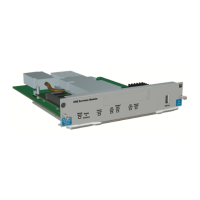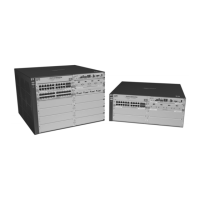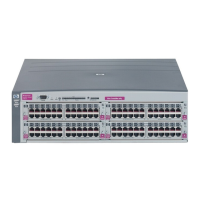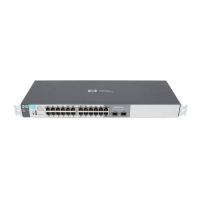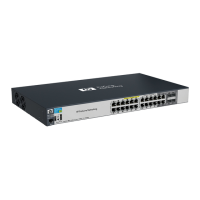Traffic/Security Filters
Filter Types and Operation
■ A named source-port filter can only be deleted when it is not applied
to any ports.
Defining and Configuring Named Source-Port Filters
The named source-port filter command operates from the global configuration
level.
Syntax: [no] filter source-port named-filter <filter-name>
Defines or deletes a named source-port filter. The <filter-
name> may contain a maximum of 20 alpha-numeric
characters (longer names may be specified, but they are not
displayed.) A filter-name cannot be a valid port or port trunk
name.
The maximum number of named source-port filters that can
be used is equal to the number of ports on a switch.
A named source-port filter can only be removed if it is not in
use (use the show filter source-port command to check the
status). Named source-port filters are not automatically
deleted when they are no longer used.
Use the no option to delete an unused named source-port filter.
Syntax: filter source-port named-filter <filter-name > drop < destination-port-list >
Configures the named source-port filter to drop traffic having
a destination on the ports and/or port trunks in the <
destination-port-list >. Can be followed by the forward option
if you have other destination ports or port trunks previously
set to drop that you want to change to forward. For example:
filter source-port named-filter <filter-name > drop < destina-
tion-port-list > forward < destination-port-list>
The destination-port-list may contain ports, port trunks, and
ranges (for example 3-7 or trk4-trk9) separated by commas.
Syntax: filter source-port named-filter <filter-name > forward
< destination-port-list >
Configures the named source-port filter to forward traffic
having a destination on the ports and/or port trunks in the
<destination-port-list>. Since “forward” is the default state for
destinations in a filter, this command is useful when
destinations in an existing filter are configured for “drop”
and you want to change them to”forward”. Can be followed by
the drop option if you have other destination ports set to
forward that you want to change to drop. For example:
filter source-port named-filter <filter-name > forward <
destination-port-list > drop < destination-port-list >
9-7
